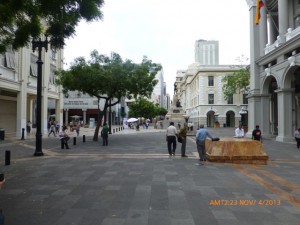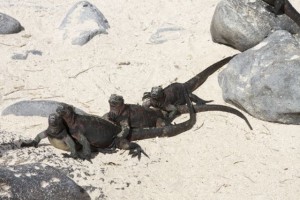The last few days has been a lot of traveling. For starters we flew from Cuenca back to Quito, (it is beginning to feel like home!), on Friday and had the rest of the day off…no tours. Actually there was a lot to do but we just hung around the hotel, rested and went for a few short walks. That evening Diego took us out to the local hot spot for supper and it was a very nice evening, a fitting end to a relaxing day.
The next morning, however, it was back at it; up at 6:00 am for a 8:00 departure to the “cloud forest” , Mindo. Here we go for a nice walk and have the opportunity to see approximately 53 different varieties of hummingbirds. Of course we didn’t see them all but the ones we did were quite beautiful and some much bigger than what we see at home.
The terrain was quite different than Quito as we are on the west side of the Andes and of course it was much more “rain forest” like. The vegetation was lush and felt like the jungle or, quite frankly, like a walk in our own back yard but much different species of vegetation. We were in the Northern Hemisphere on this excursion, just for the record. Quito straddles the equator so we were going back and forth quite often as I mentioned before but in this case it was well into the Northern Hemisphere by about two full hours. No big deal.
And then it was time to say good-bye to a great guide, Diego and 10 other who were on their way back home. The remaining 8 of us were off to Peru the next morning, at 4:00 am.
































